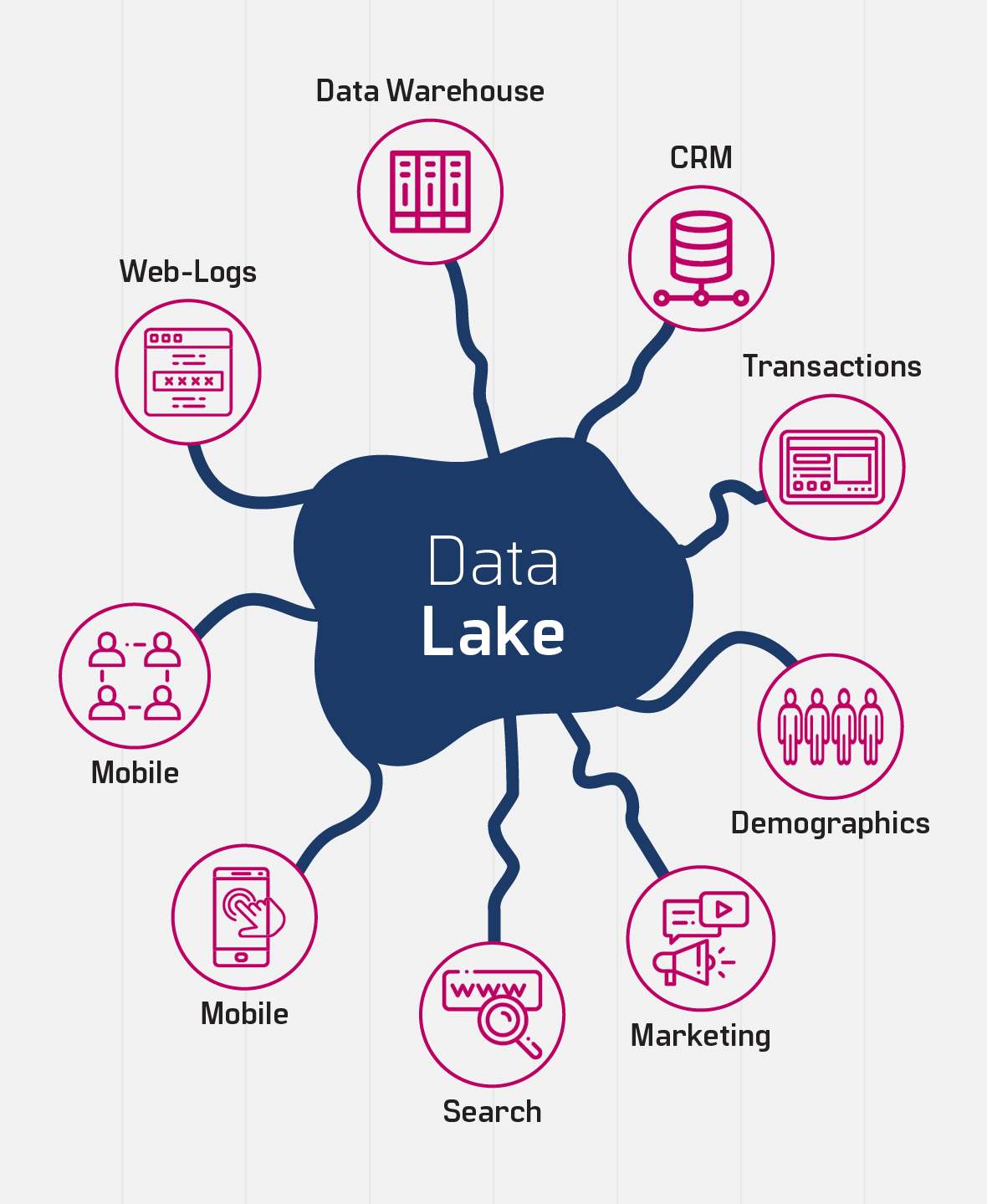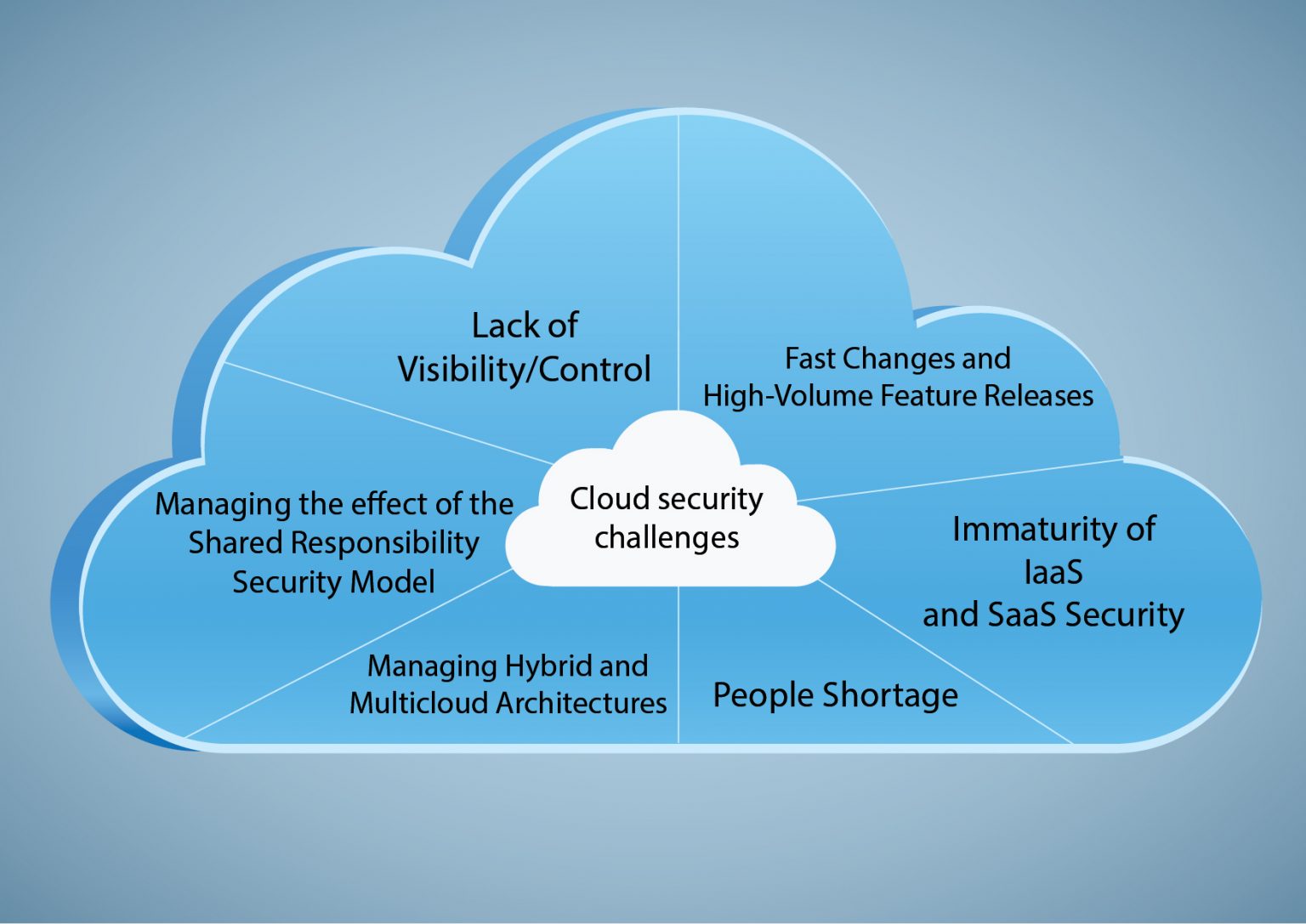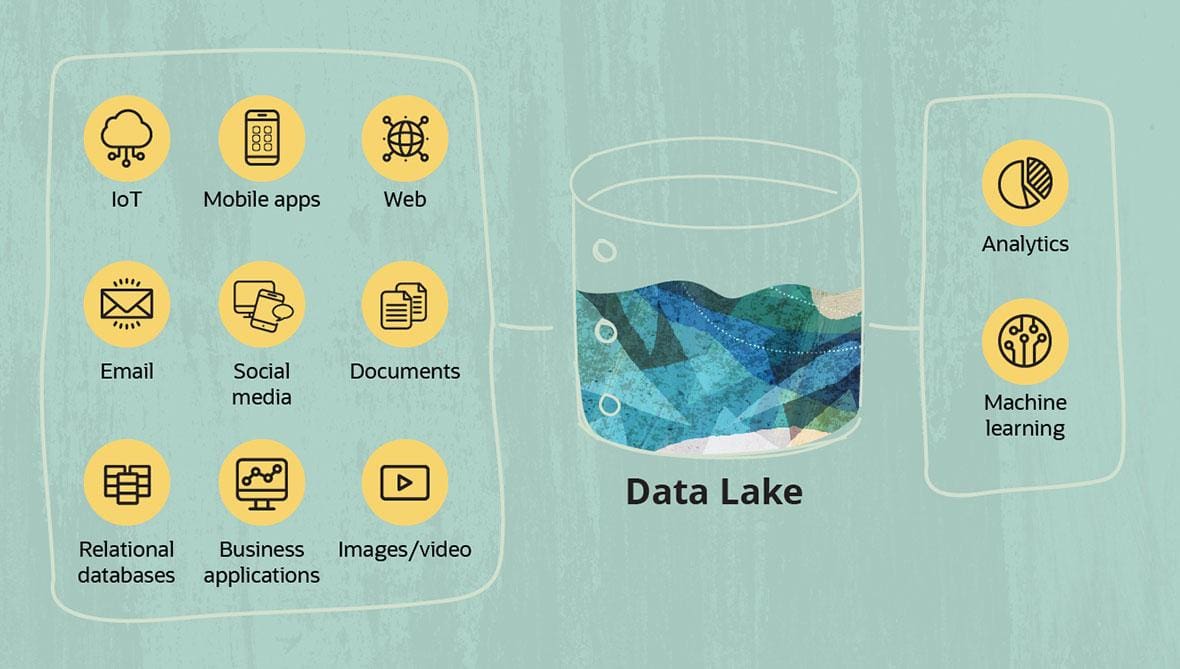Understanding Warehousing and Data Lakes in the Cloud
Warehousing and data lakes in the cloud are essential components of modern data management strategies. A data lake is a centralized repository that stores raw data in its native format, making it accessible for various analytics and machine learning tasks. In contrast, a data warehouse is a structured system designed for reporting and data analysis, optimized for specific types of queries.
Cloud-based warehousing and data lakes offer numerous benefits over traditional on-premises solutions. By moving these systems to the cloud, organizations can achieve greater scalability, cost savings, and improved collaboration. Cloud-based solutions enable easy access to data for remote teams, seamless integration with other cloud services, and the ability to quickly scale resources up or down as needed.

The Advantages of Cloud-Based Warehousing and Data Lakes
Organizations increasingly adopt cloud-based warehousing and data lakes due to their numerous benefits. These advantages include:
- Scalability: Cloud-based solutions enable organizations to quickly scale resources up or down as needed, making it easier to handle fluctuating data storage and processing requirements.
- Cost savings: Cloud providers offer flexible pricing models, allowing organizations to pay only for the resources they consume. This approach can lead to significant cost savings compared to maintaining on-premises infrastructure.
- Improved collaboration: Cloud-based systems facilitate remote access to data, enabling seamless collaboration between teams located in different geographical areas.
- Reduced maintenance: Cloud providers handle infrastructure maintenance, freeing up internal IT resources for more strategic tasks.
- Enhanced security: Leading cloud providers invest heavily in security measures, often offering more robust protection than individual organizations can implement on their own.
- Integration with other cloud services: Cloud-based warehousing and data lakes can be easily integrated with other cloud-based tools, such as machine learning platforms, data visualization tools, and workflow management systems.
By leveraging these advantages, organizations can streamline their data management processes, improve decision-making, and gain a competitive edge in their respective industries.

Data Security and Privacy
Data security and privacy are critical aspects to consider when implementing cloud-based warehousing and data lakes. As more organizations move their data storage and analysis to the cloud, ensuring confidentiality, integrity, and availability of sensitive information becomes paramount. To maintain data protection, several best practices and tools are available for organizations to leverage.
- Encryption: Encrypting data both at rest and in transit is essential for maintaining confidentiality. Most cloud providers offer encryption services, ensuring that data remains secure during storage and transmission.
- Access control: Implementing strict access control policies is vital for preventing unauthorized data access. Role-based access control (RBAC) and attribute-based access control (ABAC) are common methods for managing user permissions.
- Data anonymization: In some cases, data may need to be anonymized to protect individual privacy. Techniques such as data masking, pseudonymization, and aggregation can help remove personally identifiable information while preserving data utility.
- Regulatory compliance: Organizations must adhere to various data protection regulations, such as GDPR, HIPAA, and CCPA. Cloud providers often offer compliance tools and resources to help customers meet these requirements.
- Regular audits: Regularly auditing cloud-based systems helps identify potential security vulnerabilities and ensures that data protection policies are being followed. Many cloud providers offer built-in auditing tools and integrations with third-party audit platforms.
By following these best practices and utilizing available tools, organizations can implement cloud-based warehousing and data lakes with confidence, knowing that their data is secure and private.

Data Integration and Interoperability
Data integration and interoperability are essential components of successful cloud-based warehousing and data lakes. As organizations adopt these technologies, they often face challenges in consolidating data from various sources and ensuring seamless communication between different cloud-based systems. Addressing these challenges requires a strategic approach and the adoption of best practices.
- Data standardization: Standardizing data formats and structures helps ensure compatibility between different systems and sources. Adopting industry-standard data models and taxonomies can facilitate data integration and interoperability.
- Data orchestration: Data orchestration tools enable the automated movement and transformation of data between systems. These tools help maintain data consistency, improve data quality, and reduce manual intervention.
- APIs and SDKs: Application Programming Interfaces (APIs) and Software Development Kits (SDKs) provided by cloud providers enable easy integration and communication between different systems. Leveraging these tools can help organizations build custom integrations and workflows.
- Cloud-agnostic solutions: Adopting cloud-agnostic solutions allows organizations to avoid vendor lock-in and maintain flexibility in their technology stack. These solutions can be easily migrated between cloud providers, ensuring long-term interoperability and scalability.
- Data governance: Implementing robust data governance policies helps ensure data consistency, accuracy, and security. Data governance frameworks should include data quality checks, metadata management, and data lineage tracking.
By addressing data integration and interoperability challenges, organizations can unlock the full potential of cloud-based warehousing and data lakes, enabling better decision-making, improved operational efficiency, and enhanced customer experiences.

Assessing Your Organization’s Needs
To determine the most suitable cloud-based warehousing and data lake solutions for an organization, it is essential to evaluate its data storage and analysis needs. This assessment should consider various factors, including the organization’s size, industry, data volume, and data complexity.
- Data volume: Organizations with extensive data volumes may require solutions that offer high storage capacity and efficient data processing capabilities.
- Data variety: Organizations dealing with diverse data types, such as structured, semi-structured, and unstructured data, may need solutions that support various data formats and integration methods.
- Data velocity: For organizations dealing with real-time or near-real-time data, fast data ingestion and processing capabilities are essential.
- Data complexity: Organizations with complex data relationships and dependencies may require advanced data modeling and querying capabilities.
- Data security and privacy: Organizations handling sensitive data must ensure that their chosen solutions provide robust security features and comply with relevant data protection regulations.
- Scalability: As data needs evolve, organizations should consider solutions that can scale up or down to accommodate changing requirements.
- Cost: Organizations should evaluate the total cost of ownership, including storage, processing, and personnel costs, when selecting cloud-based warehousing and data lake solutions.
By carefully assessing their data storage and analysis needs, organizations can choose cloud-based warehousing and data lake solutions that align with their unique requirements and support their long-term data strategy.

Comparing Leading Cloud-Based Providers
When selecting cloud-based warehousing and data lake solutions, organizations often consider leading providers such as Amazon Web Services (AWS), Microsoft Azure, and Google Cloud Platform (GCP). Each of these platforms offers unique features, pricing, and performance, making it essential to compare them based on an organization’s specific needs.
Amazon Web Services (AWS)
AWS offers a range of cloud-based data storage and analysis services, including Amazon Redshift for data warehousing and Amazon S3 for data lakes. AWS provides robust security features, such as encryption, access control, and compliance with various data protection regulations. Additionally, AWS offers various tools for data integration, such as AWS Glue and AWS Data Pipeline, making it easier to move data between different services.
Microsoft Azure
Microsoft Azure provides cloud-based data warehousing through Azure Synapse Analytics and data lake capabilities with Azure Data Lake Storage. Azure offers seamless integration with other Microsoft products, such as Power BI for data visualization and analysis. Azure also provides robust security features, such as encryption, access control, and compliance with various data protection regulations.
Google Cloud Platform (GCP)
GCP offers cloud-based data warehousing through BigQuery and data lake capabilities with Cloud Storage. GCP provides various tools for data integration, such as Dataflow and Dataproc, making it easier to move data between different services. GCP also offers robust security features, such as encryption, access control, and compliance with various data protection regulations.
When comparing these providers, organizations should consider factors such as pricing, performance, and integration with existing systems. Additionally, they should evaluate the level of support and resources available from each provider, as well as their commitment to innovation and emerging technologies.

Case Study 1: Media and Entertainment Industry – Netflix
Netflix, a leading global streaming entertainment service, has successfully implemented cloud-based warehousing and data lakes to manage its massive data infrastructure. With over 200 million subscribers worldwide, Netflix generates an enormous volume of user data, including viewing habits, preferences, and content consumption patterns. To efficiently store, process, and analyze this data, Netflix leverages cloud-based solutions.
By utilizing Amazon Web Services (AWS) as its primary cloud provider, Netflix has been able to build a scalable and cost-effective data infrastructure. The company uses a combination of data warehousing and data lake solutions, including Amazon Redshift and Amazon S3. This setup allows Netflix to handle structured and unstructured data, providing valuable insights to improve content recommendations, user experience, and overall business strategies.
One of the key benefits of Netflix’s cloud-based warehousing and data lake implementation is its ability to scale resources up and down dynamically. This scalability ensures that the company can handle peak data processing times, such as during content launches or major global events, without incurring unnecessary costs during periods of low data activity. Additionally, the cloud-based infrastructure has improved collaboration among teams, as data is easily accessible and shareable across the organization.
In terms of data security and privacy, Netflix follows best practices by implementing encryption, access controls, and regular audits. The company also complies with various data protection regulations, ensuring user data is handled securely and responsibly. Furthermore, Netflix has addressed data integration and interoperability challenges by utilizing AWS’s suite of data integration tools, such as AWS Glue and AWS Data Pipeline, to streamline data flow and ensure seamless communication between different systems.
/filters:no_upscale()/news/2022/08/netflix-data-mesh/en/resources/1data-mesh-architecture-1661738740801.jpg)
Case Study 2: Retail Industry – Walmart
Walmart, a multinational retail corporation, has successfully implemented cloud-based warehousing and data lakes to manage its vast data infrastructure. With over 10,000 stores in 24 countries and an extensive e-commerce presence, Walmart generates an enormous volume of transactional and customer data. To efficiently store, process, and analyze this data, Walmart has turned to cloud-based solutions.
By utilizing multiple cloud providers, including Microsoft Azure and Google Cloud Platform (GCP), Walmart has been able to build a robust and scalable data infrastructure. The company uses a combination of data warehousing and data lake solutions, including Azure Synapse Analytics and Google BigQuery, to handle structured and unstructured data. This setup allows Walmart to gain valuable insights into customer behavior, inventory management, and supply chain optimization.
One of the key benefits of Walmart’s cloud-based warehousing and data lake implementation is its ability to process and analyze data in real-time. This real-time data processing enables Walmart to make quick, data-driven decisions, improving operational efficiency and customer satisfaction. Additionally, the cloud-based infrastructure has improved collaboration among teams, as data is easily accessible and shareable across the organization.
In terms of data security and privacy, Walmart follows best practices by implementing encryption, access controls, and regular audits. The company also complies with various data protection regulations, ensuring user data is handled securely and responsibly. Furthermore, Walmart has addressed data integration and interoperability challenges by utilizing cloud-specific data integration tools, such as Azure Data Factory and Google Cloud Dataflow, to streamline data flow and ensure seamless communication between different systems.

Emerging Technologies and Trends
As warehousing and data lakes in the cloud continue to advance, several emerging technologies and trends are shaping the future of data management and analysis. Artificial intelligence (AI) and machine learning (ML) are increasingly being integrated into cloud-based data platforms, enabling organizations to automate data processing, gain deeper insights, and make more informed decisions.
AI and ML can help identify patterns, anomalies, and correlations within large datasets, making it easier for organizations to uncover hidden trends and make data-driven predictions. For instance, AWS SageMaker, Azure Machine Learning, and Google Cloud AI Platform are just a few cloud-based services that offer AI and ML capabilities for data processing and analysis.
Another trend gaining traction is the concept of data mesh, which emphasizes a decentralized, domain-driven approach to data management. Data mesh encourages cross-functional collaboration and empowers individual teams to manage their data, making it more accessible and usable across the organization. This approach can lead to more efficient data management, improved data quality, and better decision-making.
As these emerging technologies and trends continue to develop, organizations adopting cloud-based warehousing and data lake solutions should stay informed and consider integrating these innovations into their data management strategies. By doing so, they can maximize the potential of their data, streamline operations, and maintain a competitive edge in their respective industries.

Best Practices for Long-Term Success with Warehousing and Data Lakes in the Cloud
Implementing and managing warehousing and data lakes in the cloud requires a commitment to continuous improvement and adaptation. By following these best practices, your organization can ensure long-term success in its data management and analysis efforts.
1. Regular system audits: Schedule periodic audits of your cloud-based warehousing and data lake systems to ensure they continue to meet your organization’s evolving needs. Identify areas for improvement and implement changes as necessary to maintain high performance and security levels.
2. Continuous staff training: Offer ongoing training opportunities to help your team stay up-to-date with the latest technologies and features. This will enable them to effectively manage and leverage your cloud-based warehousing and data lake solutions, ensuring long-term success.
3. Staying current with industry developments: Keep an eye on emerging trends, tools, and best practices in the field of cloud-based warehousing and data lakes. Stay informed by following industry news, attending conferences, and participating in online communities. This will help you make informed decisions about your cloud strategy and maintain a competitive edge.
4. Implementing a data governance framework: Establish clear policies, roles, and responsibilities for managing your cloud-based warehousing and data lake systems. A well-defined data governance framework will help you maintain control over your data assets, ensure data quality, and promote responsible data usage.
5. Monitoring and optimizing performance: Regularly monitor the performance of your cloud-based warehousing and data lake systems to identify bottlenecks, errors, and other issues. Implement optimization strategies to improve performance, such as query optimization, indexing, and data partitioning. This will help you maintain a high level of service and prevent issues that could negatively impact your business operations.
6. Leveraging automation: Automate workflows, data pipelines, and monitoring tasks to reduce manual efforts, minimize human error, and improve efficiency. This will help you save time, reduce costs, and improve overall performance.
7. Establishing a disaster recovery plan: Develop a comprehensive disaster recovery plan to ensure you can quickly and effectively respond to disruptions, such as data loss, system failures, and cyberattacks. This should include regular backups, redundancy measures, and incident response procedures.
By following these best practices, your organization can maximize the benefits of warehousing and data lakes in the cloud and ensure long-term success in your data management and analysis efforts.

